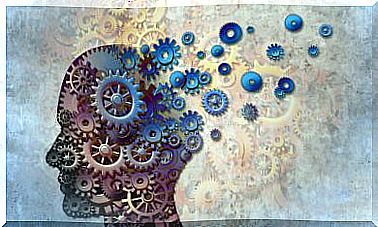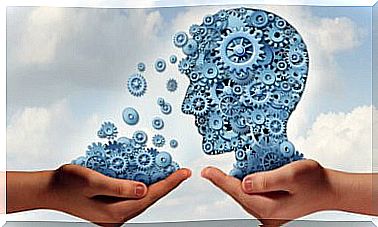Identity Fusion: Relationship Between Personal Identity And Social Identity

Identity fusion is a type of identity that relates other types of identities. To understand it better, let’s think that we all have at least two identities. A personal identity and one, or several, social ones. Our personal identity is directly related to our personality, we can be more outgoing, kinder, less neurotic, etc.
In short, our personal identity is going to be made up of different features that define us. On the other hand, social identities correspond to the groups to which we belong. For example, family, country, religion, ethnicity, sports team, etc. These identities have norms, values, and roles.
But how do we behave? Taking care of our personality traits or the norms of our group? It is understood that it will depend on which identity is activated. Normally, it will be our personal identity, so we will behave according to our personality. But sometimes the group is more important and we will behave according to the role we have in the group and its norms. For example, when our group feels threatened.

Identity integration issues
The relationship between personal and social identity that we have explained generates some problems:
- Motivation is what starts our behaviors. On the one hand, if the motivation comes from our “personal self”, the behavior will attend to our personality. While, on the other hand, if the motivation comes from our “social self”, the behavior will be determined by the norms and roles of the group.
- The members of a group define themselves based on their social identity. Therefore, group members are considered to be interchangeable. For example, in many groups a person occupies the role of funny and as a member of the group it does not matter if it is that person or another. The important thing is that someone, regardless of who it is, occupies the role of funny.
- The degree to which we identify with the group will depend on the context, the changes will make us identify more or less. For example, if our sports team wins an important competition, our social identity (with that team) will be very strong. However, as the days go by, that identity will get weaker.
The fusion of identity
The relationship between both types of identity, as has been seen, has limitations that cannot be explained without resorting to another identity. This is the fusion of identity that is defined as a visceral feeling of unity with a group. In people with the fused identity, the union with the group is so strong that the boundaries between personal and social identity become very permeable. What does it mean? That even if one of the identities is activated, it can affect the other. For example, questioning our personality will lead people who merge their identity to defend their group.
This new relationship between the two identities leads to the formation of a strong sense of connection with the group. Which, in turn, fosters the motivation of the merged people to do for the group what they would do for themselves. But, at the same time, personal relationships with group members are also strengthened.

Principles of identity fusion
The main characteristics or principles of identity fusion are four:
- The first principle is that of personal agency and proposes that the actions of the merged persons reflect both their personal and social identities. In this case, the members of the group would not be substitutable because both their personality and their role within the group are valued.
- The second principle is that of identity synergy. This principle suggests that personal and social identity can be combined, giving rise to a high motivation to do things for the benefit of the group. These people will be the first to collaborate and any compliment will make them collaborate more both personally and as a group.
- The third principle is that of related ties. According to this principle, fused people, who have very strong personal and social identities, think that the other members of their group have them too. Likewise, they will value the members of the group for their personality and their social identity, so they will create very strong relationships.
- Finally we find the principle of irrevocability. According to irrevocability, identity fusion is to be maintained regardless of context. The bonds that we have formed with the other members of the group reinforce the feeling of fusion making it permanent. Also, even though we have multiple social identities, fusion only occurs with one group. This exclusivity makes them refrain from developing strong identities with other groups and the fusion is maintained.
In short, the relationships between personal and social identity are usually exclusive, one or the other is activated. But in some people these identities merge and feed back, making these people do more things for the group. Therefore, the behaviors will depend to a large extent on whether our identity is fused or not.









